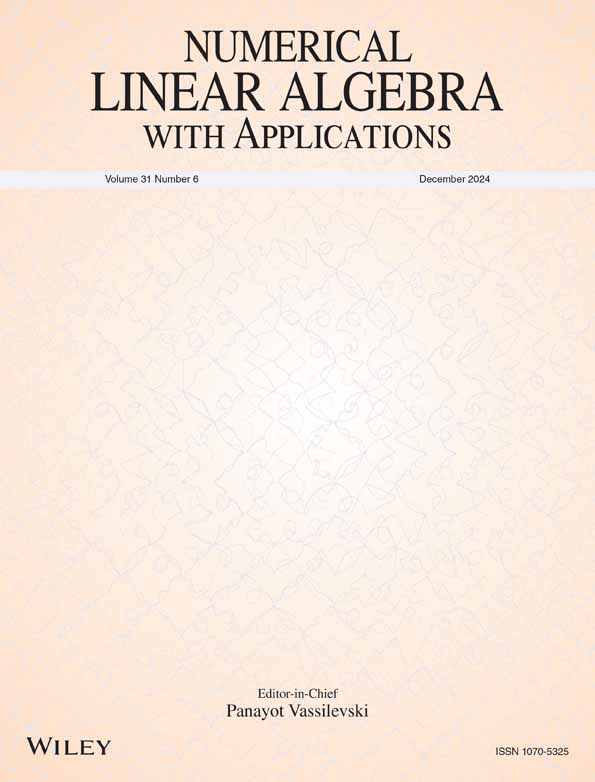Solving a class of infinite-dimensional tensor eigenvalue problems by translational invariant tensor ring approximations
Abstract
We examine a method for solving an infinite-dimensional tensor eigenvalue problem , where the infinite-dimensional symmetric matrix exhibits a translational invariant structure. We provide a formulation of this type of problem from a numerical linear algebra point of view and describe how a power method applied to is used to obtain an approximation to the desired eigenvector. This infinite-dimensional eigenvector is represented in a compact way by a translational invariant infinite Tensor Ring (iTR). Low rank approximation is used to keep the cost of subsequent power iterations bounded while preserving the iTR structure of the approximate eigenvector. We show how the averaged Rayleigh quotient of an iTR eigenvector approximation can be efficiently computed and introduce a projected residual to monitor its convergence. In the numerical examples, we illustrate that the norm of this projected iTR residual can also be used to automatically modify the time step to ensure accurate and rapid convergence of the power method.
CONFLICT OF INTEREST STATEMENT
The authors declare no potential conflict of interests.
Open Research
DATA AVAILABILITY STATEMENT
The data that support the findings of this study are openly available in iTR at https://github.com/roelvanbeeumen/iTR.




